Unmarred by intense tourism, Burkina Faso, lovingly referred to as the ‘heart of West Africa’, offers a visceral and authentically African experience for the adventurous explorer. Our comprehensive travel guide aims to paint a vivid picture of this treasure trove of traditional culture and untouched natural beauty. From understanding the gritty terrains to the political history, the pulsating cultural ethos to the linguistic contours, we delve into every imaginable aspect of Burkina Faso. Moreover, we simplify your travel planning by spelling out visa procedures, advising on travel insurance, underscoring safety protocols, and pointing out must-visit landmarks. For epicureans, there are sumptuous local cuisines to delve into with treasured tips on dining etiquettes. Considering all budgets and tastes, we also suggest various accommodation options, transportation modes, and shopping hubs; everything you need for a memorable trip to Africa’s well-kept secret.
Understanding Burkina Faso
Geography of Burkina Faso
Located in West Africa, Burkina Faso is a landlocked country bordered by six countries including Mali, Niger, Benin, Togo, Ghana, and Ivory Coast. The country is largely flat, characterised by the extensive flatness of the Sahel in the north and the diverse landscape of the South. The Black, Red, and White Volta rivers serve as the major water bodies, which meander through the lush and fertile lands of the country.
Demographics
Burkina Faso is culturally rich and diverse with about 60 different ethnic groups residing in the country. The largest ethnic group is the Mossi, who make up about half the population. The country has a population of around 20 million, with a substantial proportion dwelling in rural areas. Burkina Faso’s capital and largest city, Ouagadougou, and its second city, Bobo-Dioulasso, are the main urban centres.
Climate
The country experiences a tropical climate with two very distinct seasons. The rainy season runs from May/June to September, turning the landscape lush green. The dry season from October/November through to April/May is marked by the Harmattan, a dry and dusty northeasterly trade wind which reduces visibility and causes significant fluctuations in temperature.
Political Scenario
Burkina Faso operates as a presidential republic, where the President of Burkina Faso is both head of state and head of government. Politics in Burkina Faso takes place in a framework of a semi-presidential republic, whereby the President is the head of state, while the Prime Minister is the head of government. The country has experienced a series of military coups since gaining independence from France in 1960.
Culture
Burkinabé culture is rich and varied, with influences from the country’s many ethnic groups. Music and dance play a significant role in the cultural life, with performances taking part in community gatherings, ceremonies and festivals. The country is also known for its vibrant arts scene, being home to the much-celebrated Panafrican Film and Television Festival of Ouagadougou (FESPACO), one of Africa’s largest film festivals.
Language(s)
The official language of Burkina Faso is French, a legacy of its colonial past. However, More, Dyula and Fulfulde are widely spoken indigenous languages on a daily basis. English is not widely spoken outside the major cities and tourist areas, so French phrasebook or a local guide may come in handy.
In Conclusion
Comprehending the geography, demographics, climate, politics, culture, and languages of Burkina Faso is part of the comprehensive travel guide to this West African nation. An understanding of these features will allow travellers to fully enjoy and immerse themselves in their Burkina Faso experience.
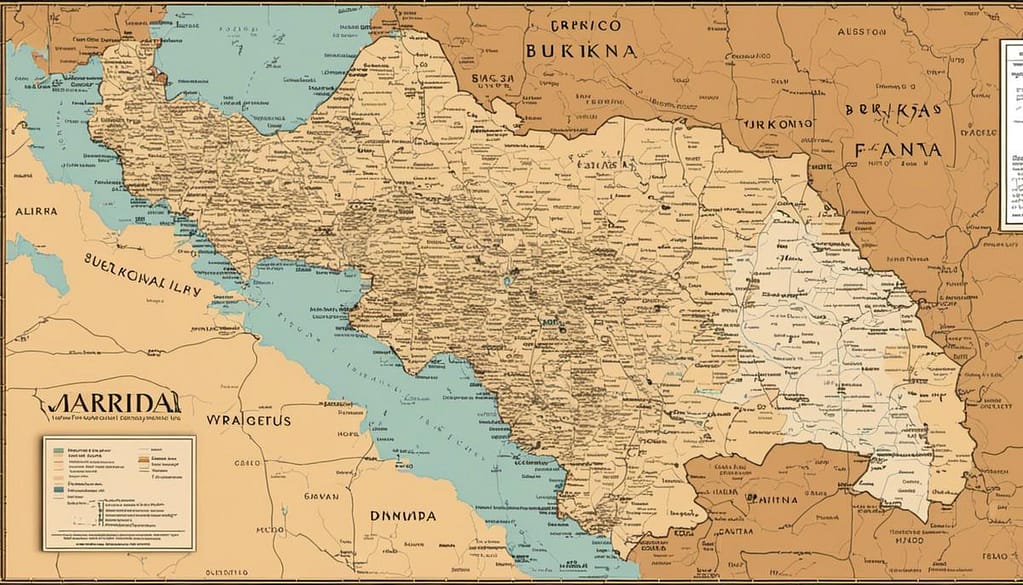
Visa and Travel Requirements
For individuals in the UK planning to embark on this journey, preparing some necessary travel documents is a must. Usually, a visa application must be submitted to the Burkina Faso Embassy in London, or through trusted visa application services. The basic requirements for a tourist visa include a passport that remains valid for at least six more months and has at least two empty pages for stamps. The visa processing duration can vary but typically takes between one and three business days. A single-entry visa generally allows a stay up to 90 days, with possible extensions upon request. It is essential to closely review the visa’s validity dates, to ensure you don’t overstay unintentionally, as this could lead to legal issues.
Before travelling to Burkina Faso, it’s vital to ensure that you are up-to-date with routine vaccinations like measles-mumps-rubella (MMR), diphtheria-tetanus-pertussis and polio. The World Health Organisation also recommends vaccinations against Hepatitis A and Typhoid due to the risk of contaminated food and water in Burkina Faso. Since Burkina Faso is located in a malaria-prone region, malaria prophylaxis is usually recommended. Additionally, proof of yellow fever vaccination is mandatory for all travellers aged 9 months and above. Visit a travel health clinic or your local GP, ideally 4-6 weeks prior to travel, to discuss any additional immunisation needs.
Comprehensive travel and medical insurance is a must when travelling to Burkina Faso. Confirm whether your policy covers potential overseas medical costs, including medical evacuation and repatriation. Since healthcare facilities, particularly outside Ouagadougou, the capital city, are limited, the cost of medical evacuation may be substantial. Your insurance should also ideally cover theft and loss as Burkina Faso has incidents of petty and violent crime.
Awareness and preparation are the best safeguards when travelling to any foreign location. Try to avoid political gatherings or protests, due to the volatility of unexpected public disorder. Always secure personal belongings and avoid overt displays of wealth to limit the likelihood of theft. Be cautious when using public transport due to poor vehicle maintenance and adherence to road safety regulations. Stay hydrated and protect yourself from local weather conditions that can often reach high temperatures.
Travel advice is a crucial aspect for awareness of current safety issues, possible restrictions, and useful guidance. Numerous foreign departments provide travel bulletins regarding Burkina Faso, resulting from ongoing threats associated with terrorism and abduction. It is strongly advised to consult with the foreign affairs office in your home country for the latest updates on security and travel advisories. On arrival, it is beneficial to register with your embassy, providing an effective means of communication in the event of potential emergencies.
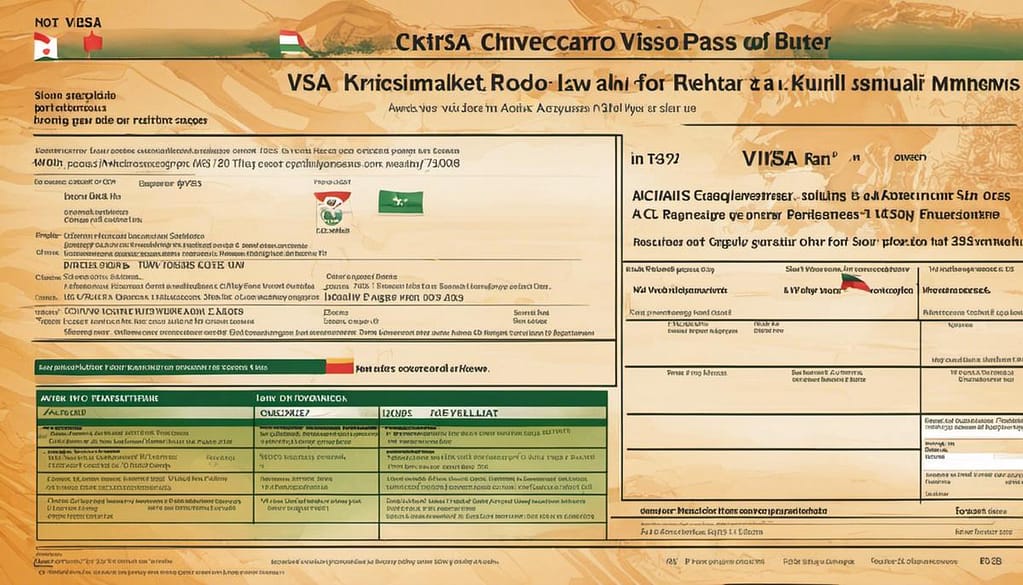
Popular Cities and Attractions
Ouagadougou: The Bustling Capital
Ouagadougou, commonly referred to as “Ouaga,” is the vibrant capital of Burkina Faso. Its exuberant ambiance is enriched by a range of attractions such as the National Museum, the colourful Grand Market, and the impressive Ouagadougou Cathedral. Roaming its intricate streets, you can observe the blend of French and indigenous Mooré cultures. Gaining access to the city is straightforward via air travel, with Ouagadougou International Airport being the country’s primary port of entry.
The National Museum is a haven of ethnographic and archaeological treasures waiting to be discovered. The Grand Market offers a lively extravaganza of vendors selling a wide array of items, from native spices to finely crafted woodwork and textiles. The city’s dynamic nightlife, with its diverse variety of bars, discos, and live music venues, is an unmissable experience for anyone who loves staying up late. The optimal time period to visit the city is during the cool, dry season spanning from November to February.
Bobo-Dioulasso: Cultural Hub
The second-largest city, Bobo-Dioulasso, brims with rich cultural and architectural wonders like the Grand Mosque and the Old Quarter Kibidwé district. It is reachable by both road and air from the capital.
The Old Quarter is a labyrinth of traditional red-brick houses, narrow lanes, and bustling marketplaces. The Grand Mosque, dating back to the late 19th century, marvels visitors with its elaborate mud-built architecture. The rhythm of local music and dance, especially of Bobo’s Bwa people, pulsates through the city, with the best time to indulge in these captivating performances being the pleasant dry season.
Gorom-Gorom: Home of the Nomads
Gorom-Gorom, nestled in the Sahel Region, is an enchanting desert town and a gateway to the lives of the nomadic tribes. Known for its weekly market, it’s a haven for buying silver jewellery, leatherwork, and local instruments. The people are welcoming, but remember to respect local customs and dress modestly.
Getting to Gorom-Gorom involves a long, bumpy ride from Ouaga along unpaved roads, with the journey often considered an adventure in itself. The best months to visit are during the cool dry season when the desert views are most spectacular.
Reserve de Nazinga: Wildlife Extravaganza
The Nazinga Game Ranch stretches over 97,000 hectares of natural beauty and is a haven for wildlife enthusiasts. Accessible by road from Ouaga, it hosts a variety of species including elephants, monkeys, antelopes, and a myriad of bird species. Visits are best planned during the dry season when animals gather around waterholes, making for good viewing opportunities and memorable photographs.
Moro-naba Ceremony: History Recreated
In Ouaga, the Moro-Naba Ceremony is a re-enactment of the 19th century Mossi tribal conflicts, created by the Moro-Naba (Emperor). This centuries-old ceremony held every Friday morning is an eruption of colourful traditional attire, music, and dance.
Whilst you prepare to delve into the unique sights and experiences that Burkina Faso has to offer, it is important to remember specific aspects of travel etiquette and local custom, making your journey both respectful and memorable. Be sure to pack ample sun cream, frequently hydrate and make absolutely certain you have the necessary vaccinations prior to your departure. Keeping local currency on you can simplify smaller purchases, and vigilance with your possessions is advised. Above all, be prepared to immerse yourself in the immersive culture and striking beauty that is Burkina Faso.
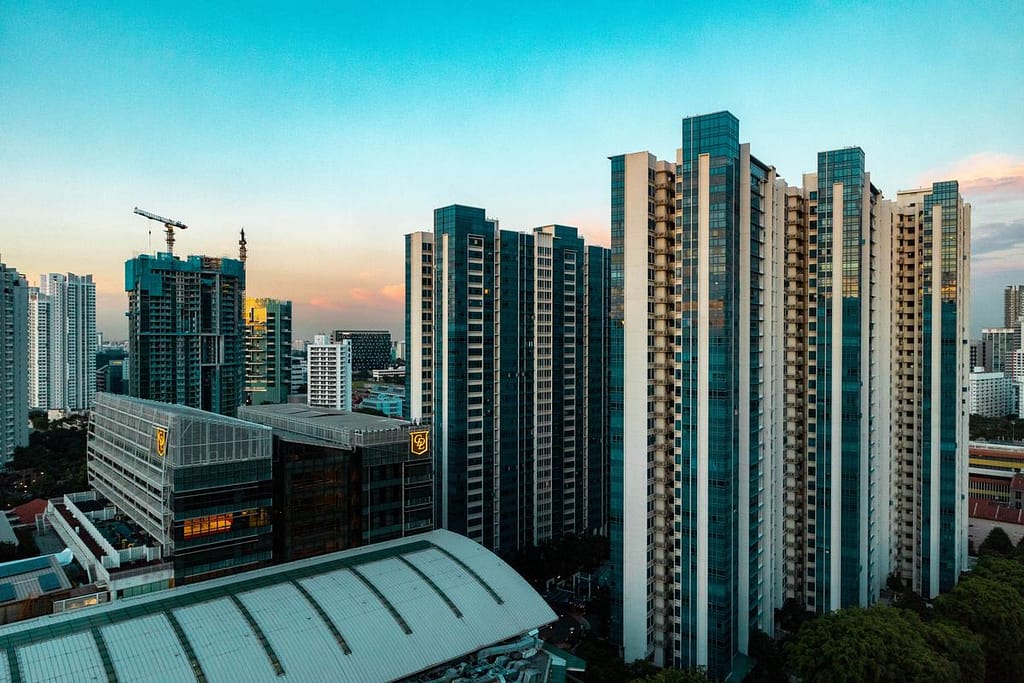
Local Cuisine and Dining Etiquette
Gastronomic Delights in Burkina Faso
Burkina Faso’s intriguing culinary tradition is upheld by its variety of distinct and flavoursome dishes, largely grounded in the staples such as millet, maize, peanuts, yams and rice. An absolute must-try is the dish known as Riz Gras or Fat Rice, a nutritionally rich dish comprising tomatoes, onions, an array of spices, and typically a portion of meat or fish. Equally as popular is Fufu – a staple dish across Africa, it takes root vegetables such as yams and cassava, boils them, and mashes them into a dough-like consistency.
Beyond these, Burkina Faso offers such delicacies as the truly tantalising Poulet Bicyclette, a slow-cooked chicken dish marinated in local spices. The culinary tour won’t be complete without pairing a serving of Tô, a traditional sorghum pudding, providing a wholesome meal that truly captures Burkina Faso’s tasty, traditional palate.
Savouring Local Drinks
To quench the thirst, Burkina Faso offers a variety of local drinks. Dolo, a millet beer, is an all-time favourite among the Burkinabé. The brewing of this special beverage is often a traditional activity carried out by women. Zoom-kom, or ‘grain water’, is another age-old drink prepared using millet or sorghum. For those with a sweet tooth, Bissap, a sweet drink made from hibiscus flowers, offers a refreshing respite from the heat.
Dining Customs and Etiquette
Meal times in Burkina Faso are a communal affair, often signifying a time to come together and share. Most meals are enjoyed around a communal bowl, and it’s a common custom to wash hands before and after eating as utensils are rarely used, with food typically eaten with the right hand. In traditional settings, men and older people often eat first, with women and children eating the remains.
It is also customary to offer food to any visitor, as hospitality is a deeply ingrained value in Burkinabe society. Turning down such offers is often seen as disrespectful.
Where to Dine
As for where to dine, Ouagadougou, the capital of Burkina Faso, teems with a variety of eateries offering local dishes. For a truly authentic experience, head to the city’s bustling food markets like Marché Central where local food stalls dish out some of the best local cuisine. There are also a number of upscale restaurants for those seeking a well-rounded dining experience with a touch of luxury.
Set at the intersection of diverse cultures, Burkina Faso caters to every food adventurer with its eclectic mix of both traditional and contemporary dining options. Whether it’s the charisma of quick snacks from local street vendors or the elegance of dish sequences in fine dining restaurants, Burkina Faso promises a gastronomical journey that impresses every traveller.
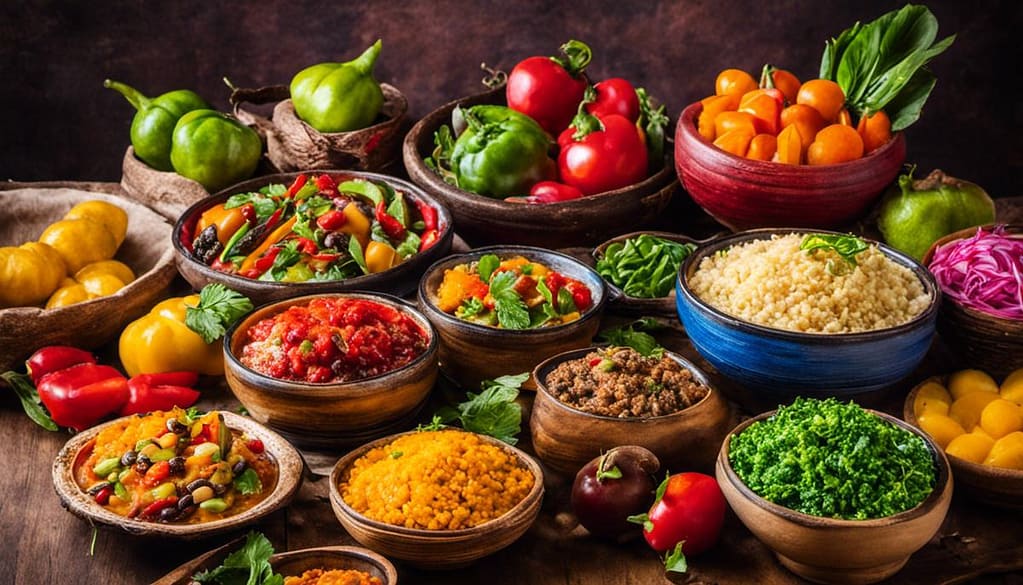
Accommodation and Transportation
Staying in Burkina Faso
When planning your escapade to Burkina Faso, rest assured that various types of accommodation await you, catering to different tastes and wallet sizes.
At the heart of the country, the capital Ouagadougou, you’ll discover hotels ranging from extravagant to standard. The esteemed Hotel Laico Ouaga 2000 is a haven for those preferring a luxurious experience, featuring facilities such as an outdoor pool, a tennis court, and diverse dining venues. On the other hand, the mid-level Hotel Les Palmiers provides cozy accommodation without the hefty spendings.
Meanwhile, budget travellers can find comfortable yet affordable lodgings such as the Yiri Suma hostel and the Auberge de jeunesse de Ouagadougou, providing a wallet-friendly option that doesn’t compromise on quality.
Moving away from the bustling capital, accommodation choices may become sparser but possess unique charm, particularly in regional towns and natural reserves. Lodges and guesthouses often prioritise sustainability here, great for the eco-conscious traveller. Immerse yourself in these settings for a heartier cultural experience and an up-close-and-personal exploration of Burkina Faso’s awe-inspiring nature spots.
Transportation in Burkina Faso
Getting around in Burkina Faso can be an adventure in itself. The country’s transportation system may not be the most developed, but it’s certainly functional, offering a number of different modes of transport.
Shared taxis are a common and cheap way to get around cities such as Ouagadougou and Bobo-Dioulasso. These taxis generally follow fixed routes, and whilst you may have to share with other passengers, they’re an efficient and simple way to navigate the city.
For longer distance travel, minibuses known as ‘bush-taxis’ are common. Used for both inter and intra-city travels, they provide a low-cost way to travel. However, be prepared for a less comfortable ride and some haggling when negotiating the fare.
If you plan to get out into more remote areas, it may be worth considering hiring your own vehicle or motorbike. Whilst the roads in Burkina Faso may be inconsistent in quality, having your own set of wheels gives you the freedom to explore at your own pace.
When it comes to travel by public transport in Burkina Faso, it’s a good idea to be patient and flexible. Delays and cancellations can be frequent, but with a positive mindset, travelling around Burkina Faso can be a memorable part of your journey.
Efficiently Traversing Burkina Faso
Do bear in mind that French serves as the official language of Burkina Faso. Your journey will be effortless if you have some knowledge of French, as it will ease the process of negotiating transport fees and getting directions.
It’s worth noting that urban areas, such as Ouagadougou and Bobo-Dioulasso, are relatively well-signed, but rural regions can often lack directional pointers. Do not hesitate to ask the friendly locals for directions – they are generally keen to assist.
Please be certain to undertake safety measures when travelling. Burkina Faso, on the whole, boasts a low crime rate, and its people are known for their warmth and hospitable nature. Nonetheless, it is prudent to remain alert and aware of your surroundings.
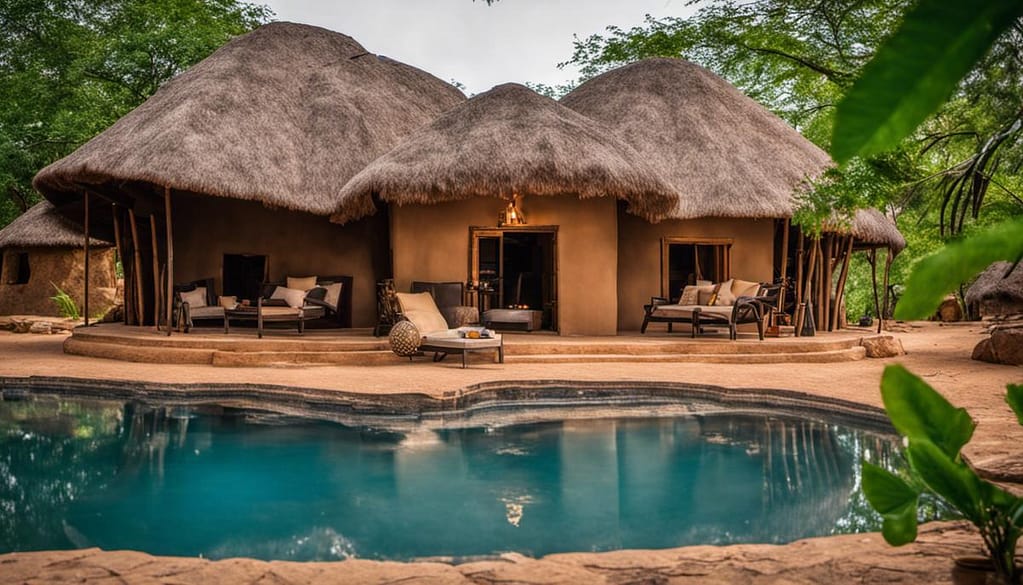
Shopping and Local Souvenirs
The Shopping Delights of Burkina Faso
Burkina Faso, ensconced in the heart of West Africa and devoid of coastal borders, entices visitors with unrivalled shopping experiences where the captivating local markets, exquisite crafts, and traditional merchandise coalesce. The enchanting artisanal prowess of this nation implies that there is a multitude of remarkable sights and experiences for discerning shoppers to uncover.
The buzzing Central Market in Ouagadougou, the active capital city, is teeming with life. The vibrant colours, engulfing noise, and distinctive scents provide a warm welcome to locals and tourists alike. Here, a plethora of goods can be found, ranging from fresh produce to textiles, local spices, and traditional remedies. However, do tread carefully amidst the bustling isles and maze-like structure of the market.
The Bobo-Dioulasso market, the second-largest city in the country, is a vast architectural arrangement where you’ll find everything: from clay pots and dyed fabrics to handwoven baskets.
The traditional Burkinabe crafts, created by the skilled indigenous artisans, are a treasured find. From the unique Lost Wax method of crafting brass items to the art of dyeing the traditional Bogolan fabrics and sampling the aromatic local shea butter – it all exemplifies the rich cultural legacy and craftsmanship of Burkina Faso.
Wood carvings are particularly sought after in this region – each crafted piece is a testament to the creators’ ingenuity and masterful artistry. These might take the form of beautifully crafted masks, statues or practical household items, each marking an exceptional display of the local craftsmanship.
The vibrant jewellery scene of Burkina Faso is another charm. Whether it’s a necklace, bracelets, or earrings made of bronze, silver, or gold, each piece bears testimony to the abundant history and culture of Burkina Faso.
Remember, haggling is ingrained in Burkinabe shopping culture. It is a playful interaction between buyer and seller, not seen as rudeness but more of a dance. Start by offering half the initial asking price but be prepared for healthy negotiation. Maintain courtesy, wear a friendly smile, and embrace the experience; after all, the art of haggling is a part of the unique shopping experience.
Shopping in Burkina Faso isn’t merely about picking up souvenirs; it’s an immersive cultural journey that offers interaction with the congenial locals and experience of their traditional customs. Ensure you are respectful, tread carefully, and fully embrace the pulsating market culture.
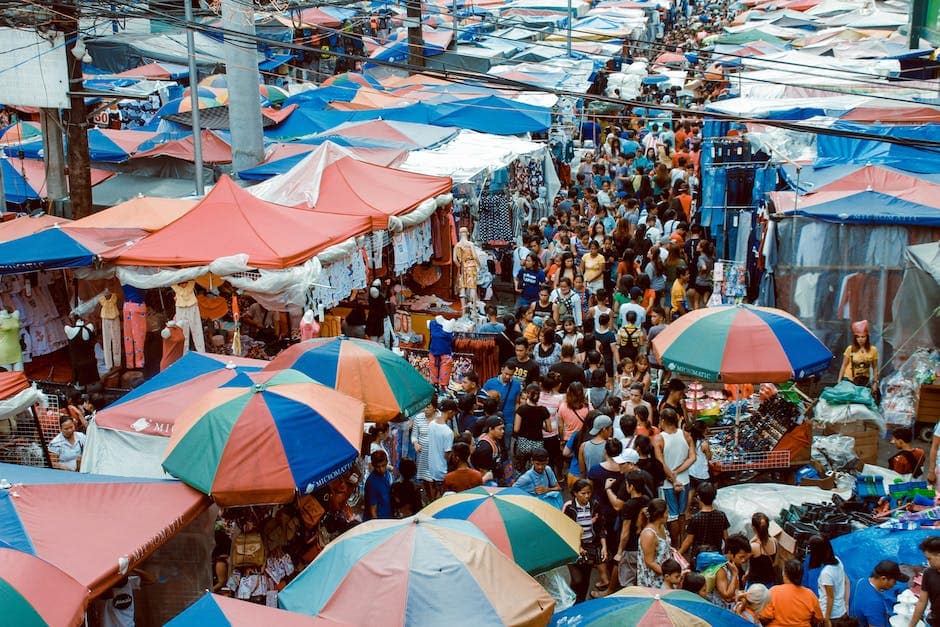
With every pop of a tasty local dish, with every turn in its buzzing markets rich with colourful souvenirs, Burkina Faso cradles a charm that’s hard to resist. This guide should serve to empower you, the intrepid traveller, to venture into the sun-baked landscape of this fascinating country and navigate its multifaceted attractions smoothly. We’ve mined the best information to give you the real sense of what it’s like to traverse through popular cities, indulge in the local cuisine, and engage with the Burkinabé way of life. Prepare to soak in the infectious energy of Burkina Faso and return home with your heart full of transformative experiences and your bags full of unique treasures. Your next adventure begins here.

